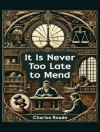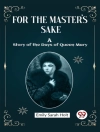Amelia E. Barr’s ‘A Reconstructed Marriage’ intricately weaves a tale of personal transformation and societal expectation within the context of late 19th-century America. The narrative explores the complexities of marriage through the voices of its vividly drawn characters, employing a rich, descriptive literary style that alternates between lyrical prose and poignant dialogue. Barr expertly captures the tension between individual desires and the roles prescribed by gender norms of her time, deftly positioning her narrative within the broader literary movement of realism that sought to reflect the authentic struggles and triumphs of ordinary lives. Amelia E. Barr, a prominent novelist and a trailblazer in women’s literature, drew upon her own experiences as an immigrant and a mother to infuse ‘A Reconstructed Marriage’ with emotional depth and authenticity. Born in England in 1831, Barr faced personal hardship that fueled her resolve to portray women as resilient and multifaceted individuals. Her keen observations of the social issues surrounding marriage and autonomy reflect a progressive spirit that sought to challenge the status quo and provide a voice for women in a patriarchal society. I highly recommend ‘A Reconstructed Marriage’ for readers interested in historical narratives that confront gender roles and social constraints. Barr’s work not only offers an engaging story but also serves as a critical exploration of the evolving dimensions of marital relationships, making it a significant addition to the canon of feminist literature.
Circa l’autore
Amelia Edith Huddleston Barr (1831–1919) was a British-American novelist, who is best known for weaving her personal experiences and historical events into her literary creations. Born in Ulverston, Lancashire, England, Barr moved to the United States in 1850, where she would later draw upon her life experiences for inspiration in her writing. A notable work by Barr is ‘A Reconstructed Marriage’ (1919), which showcases her proficiency in exploring themes of love, resilience, and social dynamics within the context of her characters’ lives. Barr’s literary style is marked by its emotional depth and vivid storytelling, attributes that have endeared her works to readers. Beyond ‘A Reconstructed Marriage’, she authored over 70 books throughout her prolific career, including ‘Jan Vedder’s Wife’ (1885) and ‘The Bow of Orange Ribbon’ (1886), which further attest to her narrative skill and her ability to create compelling, multidimensional characters. Barr’s dedication to her craft paved the way for future generations of female authors, and her work continues to be studied for its contribution to 19th- and early 20th-century literature.












